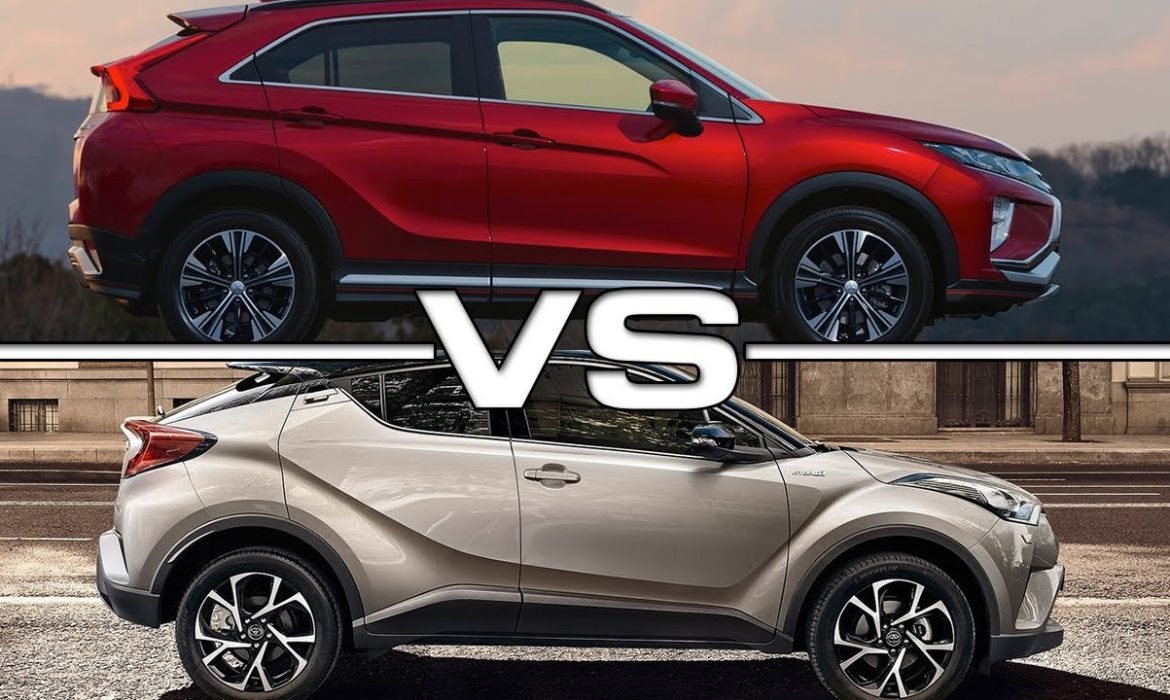Japanese manufacturers have staked out their place among the ultra-reliable cars. Toyota and Mitsubishi are brands that have a lot in common.
One gets the impression that all Japanese manufacturers follow the same principles: high reliability, inexpensive materials, average price. The average cost of Mitsubishi is less, but due to the relative rarity of cars, the cost of their maintenance and parts is higher, which means that there is parity here. To compare similar brands, the most non-standard and creative models were chosen – Mitsubishi Eclipse Cross and Toyota C-HR. 2 coupe-crossovers, comparing favorably against the background of the same type and a few sedans and SUVs. The exterior of the models deserves all praise. Eclipse looks more solid, more mature, while C-HR looks more like a cartoon character about transformers.
However, this does not affect the overall impression – Toyota attracts attention in the flow of cars, the same applies to its competitor. The handling is also excellent, both models behave obediently, keep the trajectory, and respond of the steering wheel. But that’s where the similarities end.
Differences
- Ground clearance. Toyota has a clearance height of 160 mm. The Camry has the same, and this is a sedan. This tells potential buyers to be careful on bad roads and not rely on crossover status. The revived Eclipse is more practical and reliable in this regard – with a clearance of 183 mm.
- Dynamics. Mitsubishi is equipped with a 1.5-liter turbocharged engine, while Toyota has a modest 1.2-liter engine. And yet it wins in dynamics. Despite the same acceleration to 100 km per hour (11.4 seconds) and the higher top speed of the Eclipse Cross, the C-HR CVT is tuned better than the Mitsubishi CVT. This, together with the low seating position, guarantees a positive driving experience and excellent results over short distances compared to the competition.
- The Eclipse Cross is larger in all respects: more spacious interior and bigger trunk. Given that the crossover status still presupposes the presence of good roominess of the car, Toyota is clearly inferior in this indicator.
- Fuel consumption. 3 liters in mixed mode for the C-HR versus 7.7 for Mitsubishi. A big price to pay for a powerful motor without any speed advantage.
- Interior trim. At first glance, the salons are similar. Same style, arrangement of buttons, monitor. But, after taking a closer look and having been behind the wheel for some time, you realize that the quality of materials and work of Toyota’s electronics is better, and it is more pleasant to be in it.
Despite the same class and similar prices, Eclipse Cross and C-HR are vehicles of different purposes. Toyota is an oversized and high-spirited vehicle, ideal for urban traffic conditions due to its agility and economy. Mitsubishi is a full-fledged crossover, adapted for long journeys and poor-quality roads thanks to its energy-intensive suspension. The C-HR is more pleasant to drive, the only drawback is the weak engine, which limits the driving capabilities of the car.

